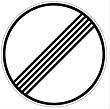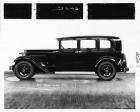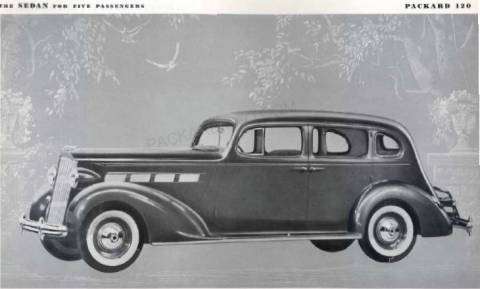|
Re: Piston clearance spec for rebuild
|
||||
|---|---|---|---|---|
|
Forum Ambassador
|
You have already contacted Kanter to find out the type & since they say the factory spec is good they must be NOS or a good repro'd steel or aluminum alloy & possibly the factory spec is reasonable. If they are the cast aluminum Egge type I believe Kanter used to (or maybe still does) sell, then the factory clearance is not enough and they will seize. I have first hand experience on this with Egge pistons. Has your machinist determined if they have the steel strut or are just ordinary cast.
Posted on: 2012/5/31 15:02
|
|||
|
Howard
|
||||
|
||||
|
Re: Piston clearance spec for rebuild
|
||||
|---|---|---|---|---|
|
Forum Ambassador

|
Last time I saw a set (1 year ago?) Kanter pistons for that engine were autothermic steel strut design.
Posted on: 2012/5/31 16:26
|
|||
|
||||
|
Re: Piston clearance spec for rebuild
|
||||
|---|---|---|---|---|
|
Home away from home
|
only mildly related, but are the Egge pistons frowned upon?
Posted on: 2012/5/31 19:24
|
|||
|
||||
|
Re: Piston clearance spec for rebuild
|
||||
|---|---|---|---|---|
|
Forum Ambassador

|
Many of us have happily driven tens of thousands of miles with Egge pistons. No, not as elegant as the original autothermic strut design, but unless you're building an engine for extreme performance, no problems with them that I'm aware of.
They had some quality issues perhaps 10 years ago, mostly with piston pin holes and/or deck height, but that's long behind them.
Posted on: 2012/5/31 19:27
|
|||
|
||||
|
Re: Piston clearance spec for rebuild
|
||||
|---|---|---|---|---|
|
Forum Ambassador
|
only mildly related, but are the Egge pistons frowned upon?
The origin of my issue with the Egge pistons is not entirely clear. Whether it was due to the machine work and using too little clearance on the cast piston or a defective piston is unknown. I suspect the clearance was too small as I believe factory spec was used in lieu of any specific documentation with the pistons stating differently. There was no other piston option for a stock rebuild at the time. The car had less than 500 miles after a rebuild when the engine started "screeching". Upon disassembly, the machinist said one piston had "collapsed" and other cylinders were badly scuffed. Not sure what specifically he meant by "collapsed". Since the only option was another set of the same piston, and the engine had to be completely bored to clean up the first mess, a well known Packard person suggested boring further oversize and installing Chrysler pistons. Those are in the car now. As Dave mentioned he has had no issues with Egge and I know others have had good luck as well. All I can relate is my experience.
Posted on: 2012/5/31 19:58
|
|||
|
Howard
|
||||
|
||||
|
Re: Piston clearance spec for rebuild
|
||||
|---|---|---|---|---|
|
Home away from home

|
The specifications for pistons with expansion struts is still valid. The .0005-.001 is a general rule of thumb still in use in current texts, although for anything other than OEM parts the correct source is the piston manufacturer. That specification ideally should be included in writing on company stationary. The OEM Packard stuff was also tin plated to prevent scuffing.
I have heard lots of complaints about this and that cast piston, but the problem is that the undersquare L-head seems very prone to piston noise which is prevented by running pistons with expansion struts and tight clearances. To prevent noise complaints many machinists were running clearances well under the .002-.025 used for cast and forged merchandise. This is too bad because it resulted in many blocks being re-machined, over machined, cracked, whatever. For some reason I recall manufacturer's service agents quoting clearances over the phone that were wrong so if your machinist has any doubts I would pursue the matter via non-verbal correspondence from the manufacturer.
Posted on: 2012/5/31 20:29
|
|||
|
||||
|
Re: Piston clearance spec for rebuild
|
||||
|---|---|---|---|---|
|
Home away from home

|
Follow the piston supplier recommendations.
To double check: IF u have an OEM piston (one that is getting replaced) then place both the old piston and the new piston in the oven at about 250 degrees F. Measure the variation in expansion. BE SURE TO MEASURE FOR GUDGEON PIN OFFSET (if any)!!!! I have no specs for offset for this particular engine. U'll have to find those elsewhere. Bottom line: Compare NEW piston to piston that is getting replaced!!! Check for wrist pin offset (if any). Look at the CHAMPFER on the OUTER circumfrenece of the old piston VS new piston. There can be variations in champfers from piston to piston and it's not a major issue unless excessive piston/cylinder clearence is needed. Are u boring the block and replacing with oversize pistons??? What is the oversize??
Posted on: 2012/5/31 21:11
|
|||
|
VAPOR LOCK demystified: See paragraph SEVEN of PMCC documentaion as listed in post #11 of the following thread:f
packardinfo.com/xoops/html/modules/newbb/viewtopic.php?topic_id=7245 |
||||
|
||||
|
Re: Piston clearance spec for rebuild
|
||||
|---|---|---|---|---|
|
Home away from home

|
The pistons are of the steel strut construction, and as I said in my first post, they are +0.020 oversize.
Never heard of gudgeon offset.... Thanks for your input. Will talk to the engine builder today, and will be going with the original clearance specification.
Posted on: 2012/6/1 1:54
|
|||
|
||||








